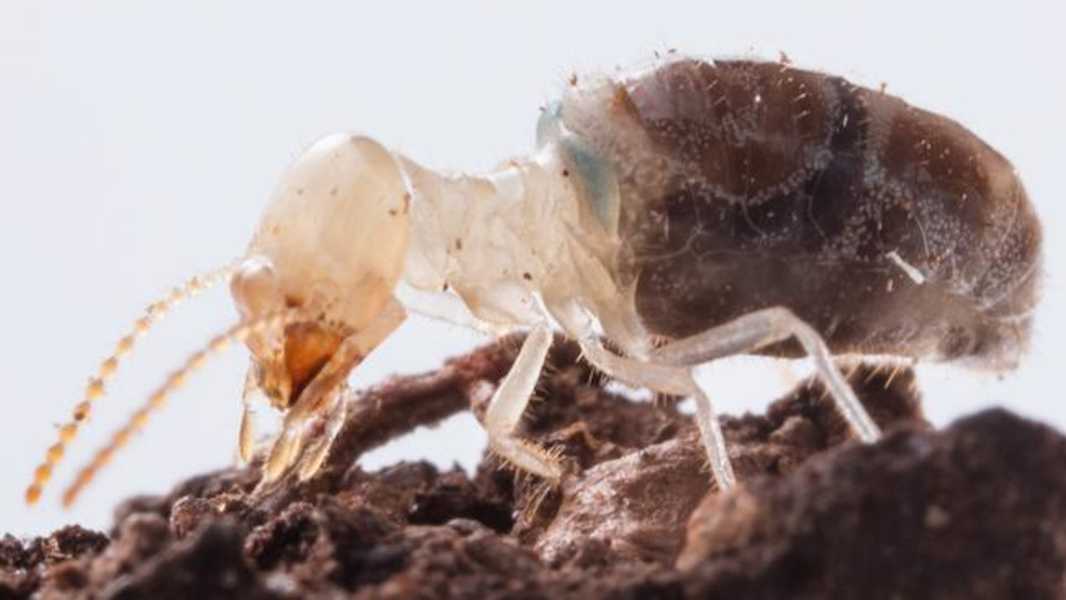
Termite Neocapritermes taracua. (Image courtesy of Dr. Ales Buček)
Kamikaze termites in French Guiana have developed a unique defense strategy – they carry “backpacks” filled with a toxic liquid that they can detonate to poison their enemies. Now scientists have figured out how these deadly backpacks can be safely carried and detonated as needed.
In 2012, researchers found that older worker Neocapritermes taracua termites have blue-spotted backpacks that explode when threatened.
N. taracua workers have a specialized pair of glands in their abdomens that gradually secrete an enzyme called blue lacase BP76 into pockets on their backs. As the termites grow, they accumulate “backpacks” filled with these blue, copper-containing crystalline structures.
When confronted with a threat, the aging workers rip their bodies apart, mixing the enzyme with relatively harmless secretions produced in their salivary glands. The result is a sticky fluid rich in highly toxic benzoquinones that can paralyze or kill predators.
However, the researchers were puzzled by how BP76 could remain solid on the termites' backs while still being ready to react immediately when ruptured.
A new study published August 15 in the journal Structure has cleared up the mystery, providing the first high-resolution crystal structure of the enzyme.
“The three-dimensional structure of the enzyme demonstrates that BP76 uses different strategies for stabilization,” said lead author of the study Jana Škerlová, a researcher at the Institute of Organic Chemistry and Biochemistry of the Czech Academy of Sciences.
Kamikaze termites use a unique enzyme. Its secrets have been revealed by scientists at IOCB Prague – YouTube
See more
The enzyme folds tightly, like a folded piece of paper, which helps it resist degradation over time. Another layer of protection is provided by sugar molecules that attach to the protein, forming a protective shield that further stabilizes it.
One of the most interesting characteristics of BP76 is a rare and extremely strong chemical bond between two amino acids, lysine and cysteine, located close to the enzyme's active site. This bond is not usually seen in enzymes and plays a key role in maintaining BP76's structure, especially when the enzyme is stored as a solid on the termite's back, the researchers found.
This bond functions as a special locking mechanism, ensuring that the enzyme remains in its original form and is fully functional, ready to be used when the termite needs to protect its colony.
“Just as understanding the individual components of a device sheds light on its operation, knowing the three-dimensional structure of a molecule helps us understand a biological process,” said study co-author Pavlina Rezačová, a structural biologist at the Czech Academy of Sciences.
The ability of termites to reliably store and accumulate this enzyme as they age is vital to colony defense. Previous research has suggested that as termites' mandibles become blunted, older individuals may be less effective at finding food or maintaining the nest than younger workers.
Instead, older workers, using explosive backpacks, can specialize in performing the final destructive act of colony defense.
Sourse: www.livescience.com





